The breeders in Hungary used more than German Pointers in trying to bring Vizsla back. It is a nice folklore that the Vizsla originated in the 9th century, but all we can say that some of its ancestors may have. By all indications, vizslas (meaning pointer in Hungarian) and similar to the breed we know today were bred in Hungary (then part of Austro-Hungarian Empire) in the 1800’s. They almost became extinct and were brought back twice since that time. The first was at the beginning of 1900’s and then after WWII.
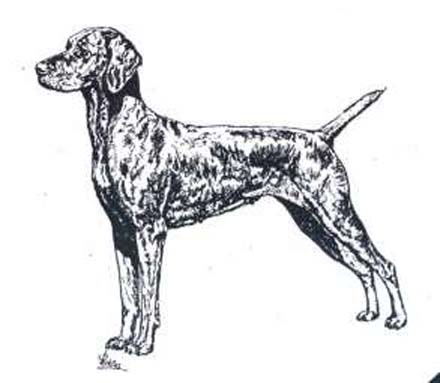
There were references in the correspondence of the Sultan of Turkey to the Governor of Dunaj region from 1515-1563 that mentions a Hungarian “vizsla”. But the Yellow hunting dogs were lost from these lands under the Turkish occupation between 1526- 1686 and brought to extinction. Pointing dogs such as German Pointer started to be popular in that region, after hunting with falcons and horses was not possible.
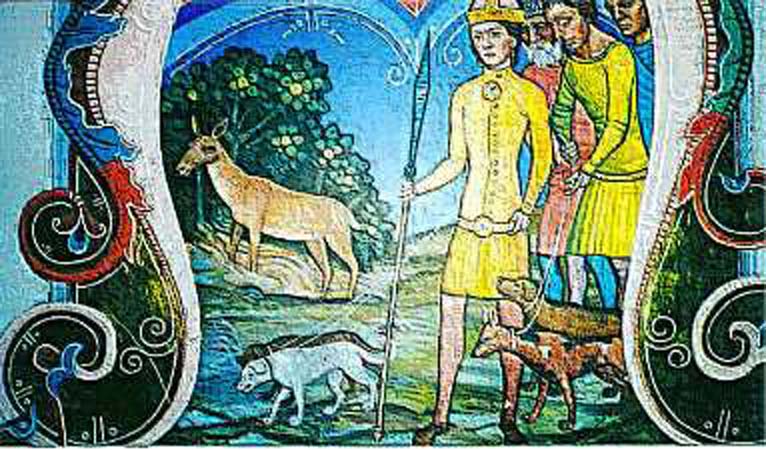
Some of the original breeds in the background of the Vizsla are thought to have come from the Asian (Turkish) greyhound and Buffons, Turkish Yellow hounds, some sources stated that greyhounds of sloughi type and also a Transylvanian hound dog may have been in the ancestry tree of the Vizsla or Hungarian Pointer as it is known in Hungary and most of Europe now. The breed’s name in Europe Magyar Vizsla. Hounds were used in the Hungarian region for hunting in the days of the Arpad dynasty from 11th to 14th century and it was most likely the Yellow Turkish Hound and variations of hounds were used to hunt with falcons. Magyar Pointer or Hungarian Vizsla as we know it today did not exist at that time in all probability, nor we can say for certain that they existed in 1400’s when that famous quote from the letter in 1508 from a Hungarian gentlewoman named Battyhany to her son Balthasar is talking about a gift of vizsla. The word “vizsla” means “pointer” in Hungarian, so it could have been any pointer dog used at that time for hunting that this letter was referring to. No detailed description of the dog was in the document, but only the word “vizsla”. To base assumption that Vizslas as we know them today existed at the Battyhany estates on this one reference, is just “wishful thinking.” There are more references to similar dogs and there is no question that there was some type of yellow pointer dog used for hunting in that region. It differed in form and function from the Vizsla breed of today.
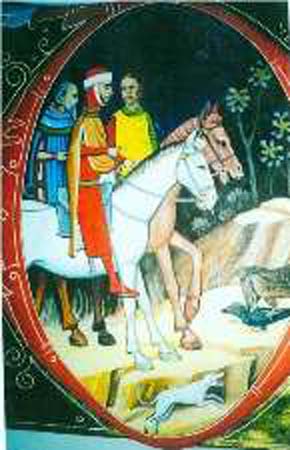
Hounds were bred to point and find game and some of the Fox hounds, English Pointers, GSP, GWP were used to achieve this characteristic in a Vizsla and there is no doubt that English Setters were also added to the mix. (Appearance of long hair puppies in some Vizsla litters at the present time is attributed to Setters). Hungarian breeders have carefully selected the breeding stock to achieve the yellow/sandy/bread crust color of their pointers (vizslas) since it was a very suitable color for hunting game birds in the plains of Hungary.
There are several documented breeders in the beginning of the 1800’s, largest being Zay family in Zayugroe that was breeding Hungarian pointers closest to a form and function that we know today. But by 1890 the breeding of these dogs stopped and the Vizsla was found in only few places in Hungary. Pointing Field Trials were held in 1882 in the fields close to Budapest and were attended in several classes by Enlish Pointers and Hungarian Pointers (possibly also by crosses of Vizslas with English and German Pointers). Year later, there were only few Hungarian Pointers entered into this Field Trial and the interest by local hunters in this breed was diminishing fast. Several of the remaining breeders started to be concerned about the future existence of the breed. They searched the country for purebred Hungarian Vizslas – they found only about dozen of them. They started to work on re-establishing the breed with these remaining Vizslak (plural or Vizsla). It is not known what other kinds of pointers were used in out-crossings, but it is almost certain that Yellow Transylvania Hound, Weimeraner (Note: This is being questioned now, because of the genetics of color and it may have been that Vizsla was used by Weimeraner breeders instead), Pointers, English and German, and Irish Setters were used.
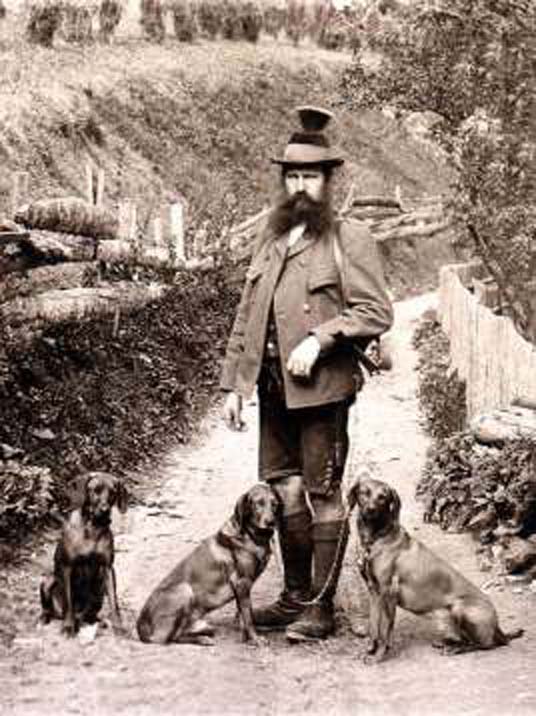
But on the surface, it looked like the expected renewal of the breed did not happen – the breed was still decimated and the numbers were dwindling – the popularity of English Pointer was high and the Hungarian Pointer was suffering and unable to compete with that popularity. There are several opinions expressed by Vizsla breeders in Europe about breeds used to bring the Vizsla back from extinction. One of the opinions is that the modern Hungarian Vizsla came out of crossbreeding between various pointers and hounds, because as late as 1935 there were puppies born in Vizsla litters that looked like pointers and hounds. No matter what we believe about outcross breedings in the early 1900’s, it is certain that breeders at that time kept to the vision of the final goal – bringing Hungarian Vizsla back! In November of 1916, Dr. Tibor Thuroczy published appeal to save the Vizsla breed in the Nimrod Vadaszujsag, hunting periodical. In the beginning it looked like there was not much response from the breeder community to this appeal. But a year later, in November 1917, Dr. Gyula wrote in Nimrod that his Vizsla male Witti was trained in the field for 3 months and has become at the age of 6 years perfectly trained gun dog. This dog has become very important in re-building of the breed. Starting in 1918, Witti is the name that is showing in practically all pedigrees – for about sixteen years by breeding of his numerous offspring and by excluding any dogs with white; Witti’s line contributed to the breed tremendously. Renewal efforts of the Vizsla breeders in Hungary received a tragic set back in 1920 after the Trianon peace treaty. Hungary lost large chunks of areas in Czechoslovakia, Rumania and Yugoslavia. Carpathian Mountains were no longer the natural borders of Hungary, as they were for thousand years. Many Hungarian Vizslas remained outside of the Hungarian borders and were lost to the Hungarian breed history, although continued in Slovakia and Romania. On the other hand, the growing patriotism gave rise to interest in breeding of national breeds. The Hungarian club of Breeders of Hungarian Pointer was established In May of 1920 and that same year, Professor Raitsits and Dr. Polgar established first studbook of Hungarian Vizsla.
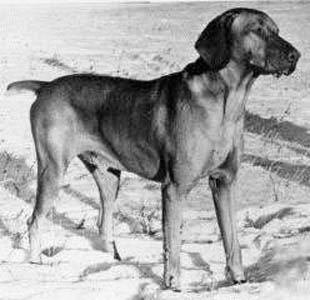
The first Field Trials were held in 1922 at the estate of count Vilmos Festtics. Great boost to the Vizsla breed was a win by a dog owned by Mr. Karol Babas, the CH Vegvari Betyar at that field trial – win over English and German Pointers! Even when he was 13 years old, this dog was capable to hunt in the fields without tiring from early in the morning till dusk, even in the oppressive August heat. A female Vizsla, CH Kati, who was considered the best working field Vizsla for a long time, matched his achievements little later. During her life, Kati whelped total of 73 puppies. Another dog worth mentioning is a male Vizsla named Boresa owned by Count Ferenc, who also hunted all day without any apparent signs of tiredness. Vizsla was gaining popularity and the breed was prospering in those years, until the WWII.

That period is another distinct chapter in the history of the Vizsla breed and deserves to be written about in detail. The first standard of the breed was published in 1928. In 1935, Federation Cynologique Internationale (FCI) recognized Vizsla as a breed and in 1938 fist Vizsla came to America. Vizsla came to Canada few years before USA and the Canadian Vizsla history is described here.
Vizslas in USA by chronological history please click here
